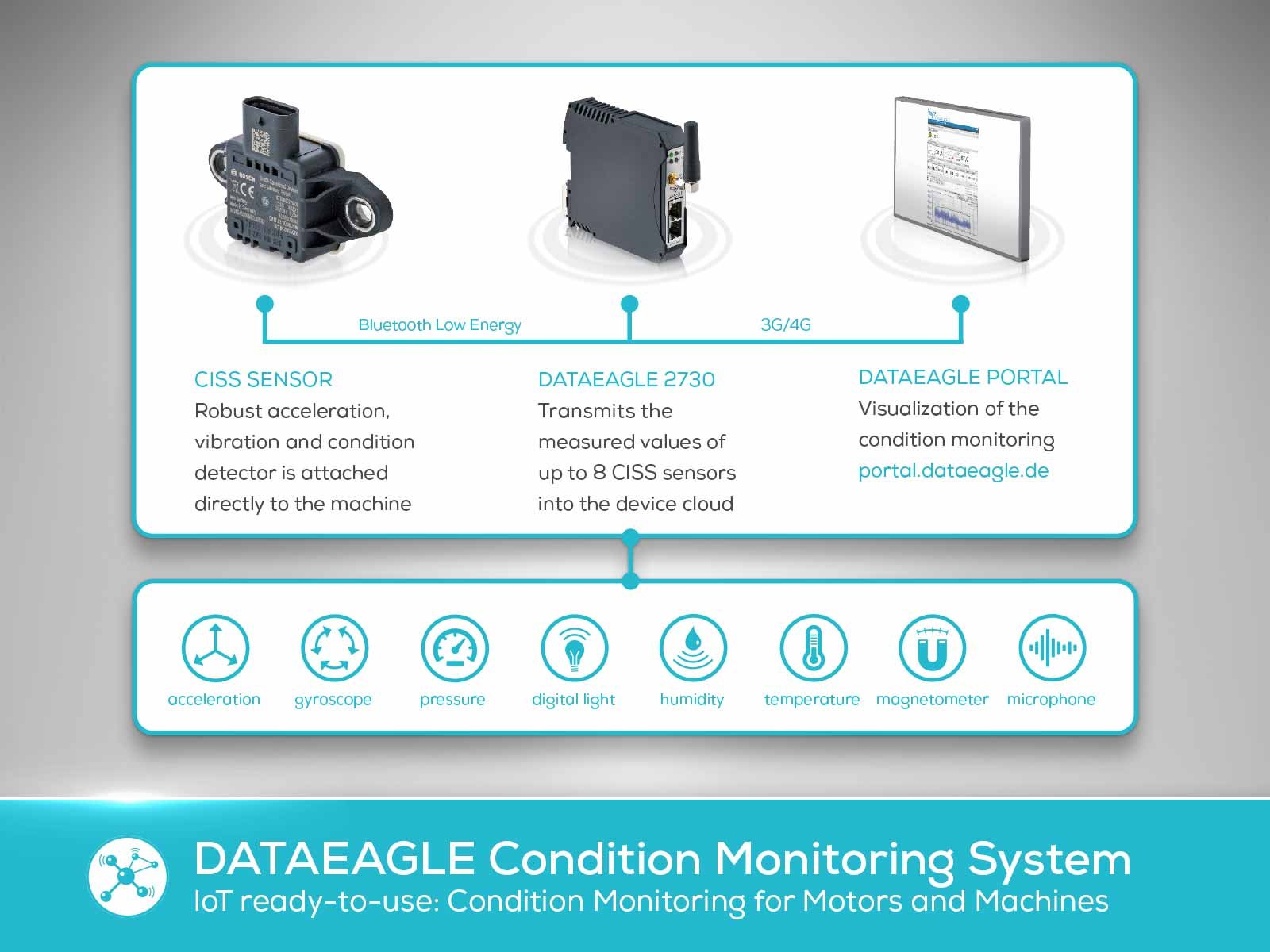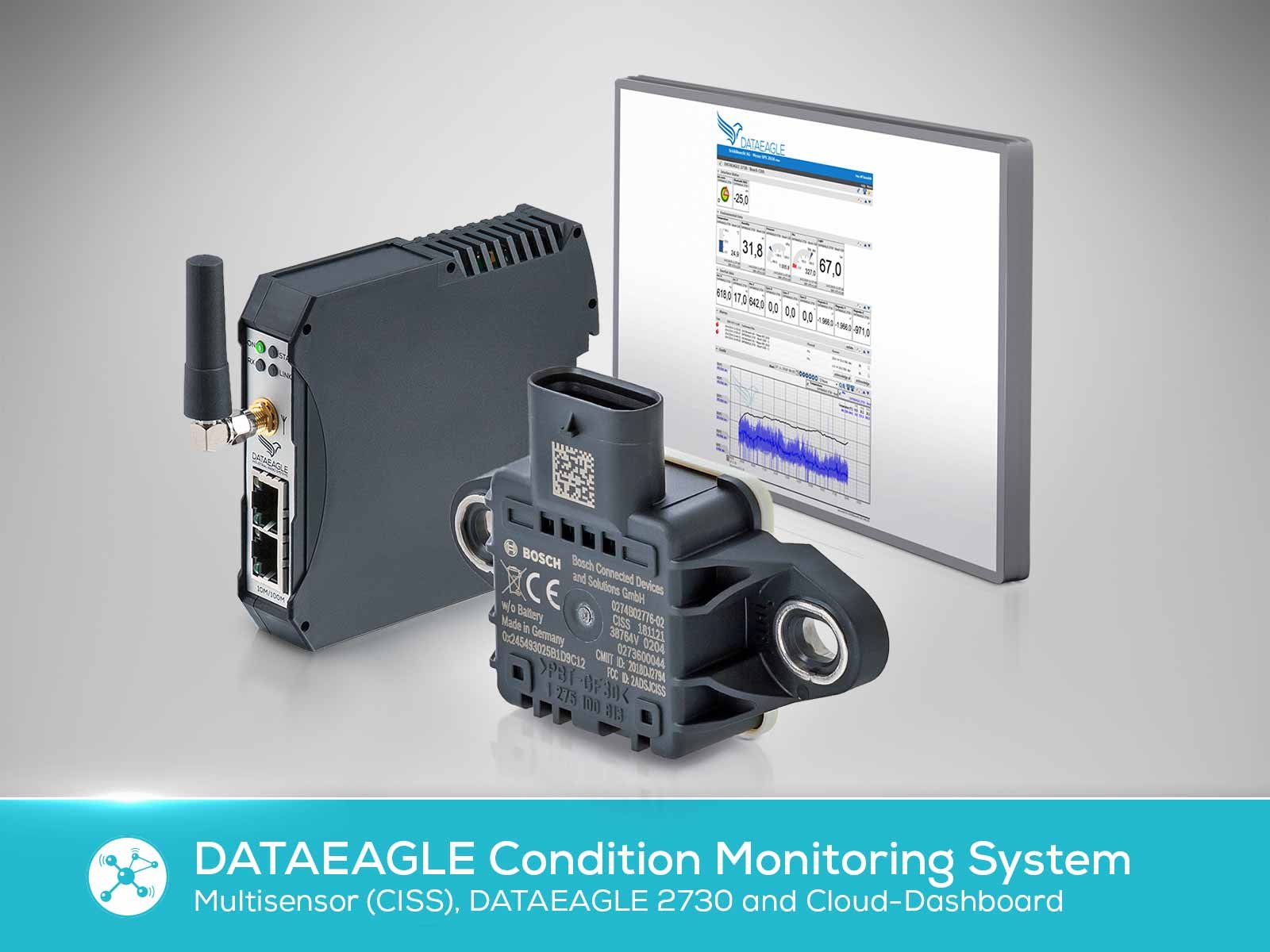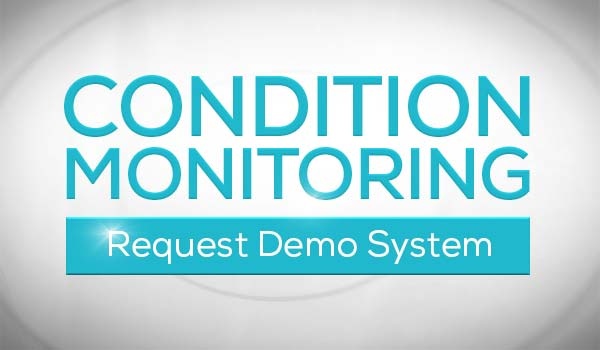- Home
- Products
- Blog
- CASE STUDIES
- Download
- About Us
- Contact

This is your quick and cost-effective entry into Condition Monitoring
Sensors can keep your machines and systems healthy and efficient. Being able to closely and continuously monitor the condition of production equipment in a factory will allow for targeted servicing and maintenance, fewer breakdowns and an increase in overall efficiency. The Schildknecht IoT Ready-To-Use system offer a quick and cost-effective entry into condition monitoring.
If you are new to the concept of condition based monitoring, it can be difficult to determine where to start. And what about the costs? And how to avoid turning it into a big and complex project with too many stakeholders?
There are many questions to consider before embarking on a condition monitoring project. At Schildknecht, we know how to answer them. Over the years we have built more than 500 proof of concepts together with our customers, and we have learned that you have to be pragmatic and focused to succeed.
Based on our experience, we have developed the Schildknecht IoT Ready-To-Use systems. They offer you a quick, easy and cost-effective entry into condition based monitoring, and we recommend a step-by-step approach to deploying them.

First steps for introducing condition monitoring
A good way to get started is to focus on the weak spots of your factory. Ask yourself these questions:
- What are the weakest parts of my production setup?
- Where do breakdowns occur most frequently?
- Where do failures have financial consequences?
- Where do breakdowns have widespread effects, e.g. because several production lines are blocked as a result?
Very likely you’ll be able to point out specific pumps, motors, or other equipment that constitute critical weaknesses in need of constant monitoring. This is the place to start.
The next step is to determine what you want to measure. The most common values are temperature, vibrations and noise level. However, the IoT Ready-To-Use system enables you to measure much more if necessary. Its CISS multi-sensor for harsh environments contains 8 sensors:
- accelerometer
- gyroscope
- magnetometer
- digital light sensor
- pressure sensor
- microphone
- thermometer
- humidity sensor
This versatility allows you to experiment and to adjust the setup along the way until you have found the best parameters to monitor on your machines and equipment. This adjustment can be done on our cloud portal, otherwise known as DATAEAGLE Portal. You can even install multiple sensors to your machine at different points and connect them to the gateway, DATAEAGLE 2730, to get a better and accurate understanding of the health of your machine.

Start with monitoring one application
To get started, it is important to focus on one application or machine. Don’t think too much about integration or turning this into a multi-functional system. Save that for later. The initial phase is all about focusing and building a strong case around one single application. This also lets you control costs and installation time.
From this point on you can adjust and expand your condition monitoring solution easily, as the Schildknecht wireless concept with decentralized sensors and central gateways gives you the flexibility to change your setup along the way.
For instance, you might have a number of older machines in your factory, with all the problems that go with them in regards to repair and spare parts. It would make good sense to monitor them closely to ensure maximum uptime and to extend their life span. A non-invasive system like IoT Ready-To-Use ensures easy retrofitting with the least possible installation efforts and disruption to production.
Or you can work towards the convergence of your IT and OT infrastructures. As IT and OT move closer together you might want to get a simultaneous overview of both worlds. For this, Schildknecht is partnering with PAESSLER, and data from the Schildknecht system can be easily integrated into the PAESSLER PRTG Monitor.
Install the condition monitoring system
Getting a condition monitoring system up and running doesn’t have to be complicated and time consuming. We have designed our system explicitly with ease-of-use and flexibility in mind.
For instance, no integration is needed, and its multi-sensor has magnets for easy installation. Also, to avoid the hassle of installing extra wiring, the system’s gateway uses radio communication to send monitoring data to a cloud portal.
You can mount the multi-sensor directly on the engine or machine. It transmits measurement data via Bluetooth Low Energy to the DATAEAGLE 2730 IoT gateway, which is able to receive data from up to 8 sensors simultaneously. The gateway then pre-processes the data and transfers it via wireless 3G/4G to the cloud, where it is stored and ready to be visualized and analysed via the DATAEAGLE Portal.
The DATAEAGLE Cloud Portal provides a ready-to-use dashboard to get an overview of the data coming in from the sensors. At this point you can analyse the data, with support by Schildknecht’s consultants as needed (free of charge). Depending on the use case, you can set different transmission intervals of the sensor values to the cloud, or you can set alarms for individual sensors.
Request a demo
Don’t hesitate to reach out to us for more information about how to get started with condition based monitoring. We invite you to request a demo or a test system – we are looking forward to helping you to a quick, easy and cost-effective entry into condition monitoring.
